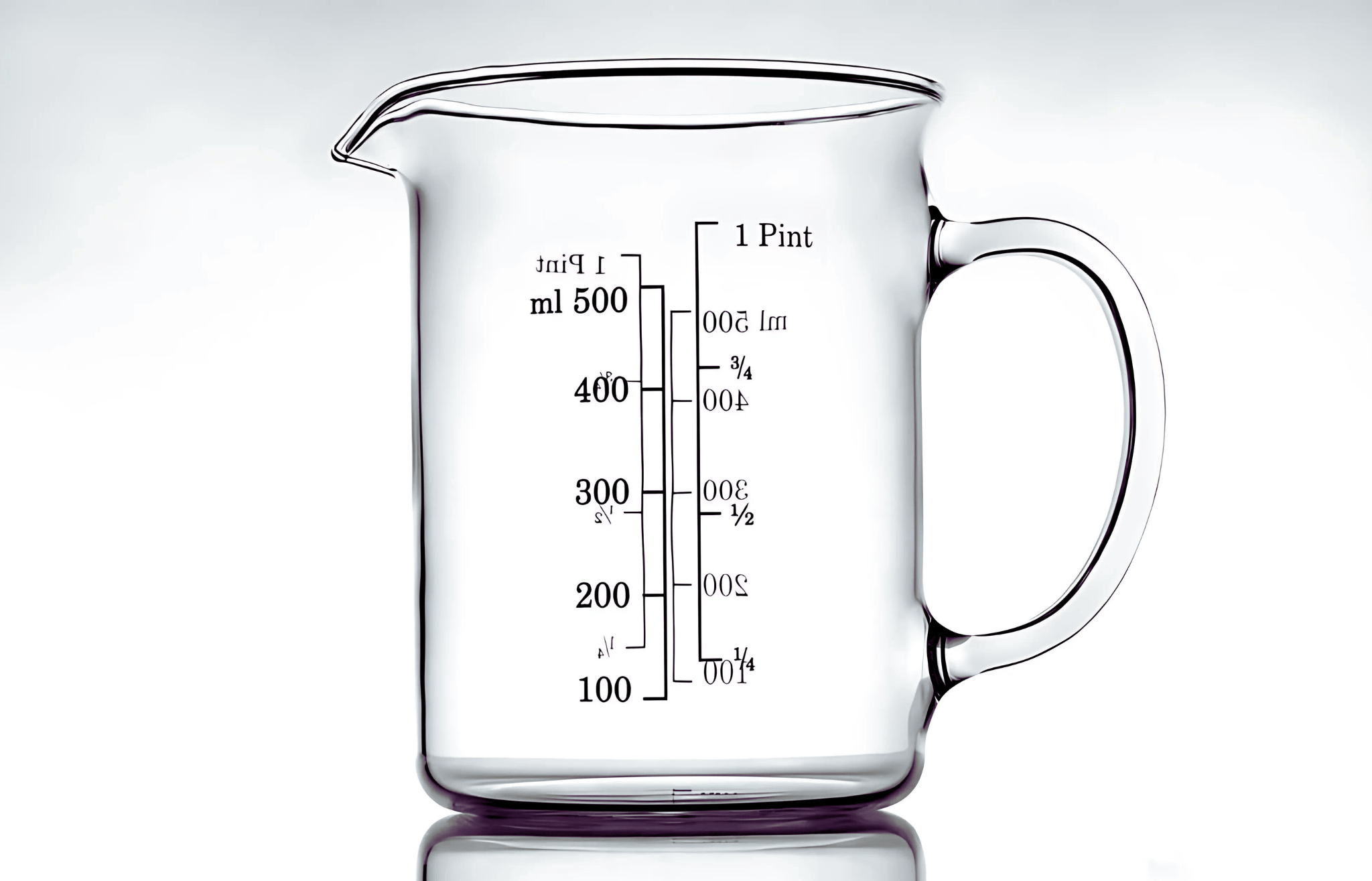Whether you want to cook, mix drinks, or simply understand measurements, the one common question that is always encountered is: how many ounces in a pint? It may seem straightforward, but it actually depends upon whether you are in the United States or in the UK or what type of pint you are referring to. So let’s get into distinguishing pint and ounce measures between the United States and the UK and how these examples will help make things clearer.
The Simple Answer: How Many Ounces in a Pint?
US:
1 US pint = 16 US fluid ounces
UK (and other Imperial system countries):
1 UK pint = 20 UK fluid ounces
Of course, these seem a bit nonsensical, but you need to know them both for ordinary use and for cooking recipes where liquid measurements are exact.
Pints and Ounces
Before we discuss how pints and ounces differ in the two different measurements, US and UK, let us first define what pints and ounces mean.
Pint: A pint is the measure of volume for liquids. It is primarily used in this sense, but in some cases, they do use it to measure dry ingredients. Both US Customary and British Imperial units of measurement include a pint.
Ounce: An ounce is a measure of volume that is used in measuring liquids. It’s smaller than a pint. In fact, pints can be divided into ounces for finer quantities.
Why is US different from UK Measurements?
You may have noticed that the UK system uses ounces in different quantities per pint while the US uses ounces in different quantities per pint. The difference is based on the fact that the US uses customary US systems of measurement and most of the Commonwealth nations and the UK use the Imperial system. Over time, these two different systems have developed with minor variations that can be identified in volume measurements.
US Customary Pint
In the United States, precisely 16 fluid ounces make up a pint. Generally, this is the measurement standard applied in cooking, drink servings, and normal usage of US daily life.
For example:
When you buy a pint of beer in the US, you are buying 16 fluid ounces.
A pint of milk or ice cream will also have 16 fluid ounces
UK (Imperial) Pint
Whereas, the UK pint is larger compared to size. It contains 20 fluid ounces in volume. In this regards, it can be stated that the UK fluid ounce is a bit smaller in size as compared with the US fluid ounce but the pint itself in the UK system is larger.
For example,
The UK pint of beer has the same volume, that is, 20 fluid ounces.
Likewise, the UK pint of milk and cream also has the same volume, that is, 20 fluid ounces.
Fluid Ounces vs. Dry Ounces
Fluid ounces versus dry ounces. Another key distinction. Fluid ounces are used for measuring volume; dry ounces for weight. And it becomes confusing simply because both use the term “ounce”. But not the same ounce, of course.
Fluid ounces measure volume-volume used to measure such liquids as water, milk, oil, or other liquids.
Dry ounces are a measure of weight-for dry ingredients such as flour, sugar, and nuts.
For example, if you had a pint of blueberries you might identify their volume in pints but weigh them in dry ounces. Dry ingredients vary in density, so the weight in a dry pint is not always the same as that of a liquid pint in terms of ounces.
Conversions in Pints and Fluid Ounces
Having mastered the main differences between US and UK pints, it is the time for some concrete conversion practices.
US Pint to Fluid Ounces
1 US pint = 16 US fluid ounces
½ US pint = 8 US fluid ounces
¼ US pint = 4 US fluid ounces
This means that if you are cooking or mixing drinks and the recipe calls for a pint of liquid, you will measure out 16 fluid ounces.
UK Pint to Ounces (Fluid)
1 UK pint = 20 UK fluid ounces
1/2 UK pint = 10 UK fluid ounces
1/4 UK pint = 5 UK fluid ounces
If you are using a recipe from the UK or are living in the UK, keep in mind your pint holds 20 fluid ounces, which is a wee bit more than the US pint.
Real-Life Usage of Pints and Ounces
To explain further on why knowing ounces per pint is important, let me provide you with some real-life applications of how to use pints and ounces in practical situations:
Drinks: If you’re in a pub in the United States and you go behind the bar and ask for a pint of beer, you’re getting 16 ounces. If you’re in the UK, however, a pint of beer will be 20 ounces—that is, you get more beer in a pint glass there than in the US.
Cooking: In American usage 1 pint of chicken broth or cream, for example, will be expressed as 16 fluid ounces, while in British a similar recipe expressing a demand for the same ingredient under its British wrapper that is a pint would call for 20 fluid ounces.
Dairy Products: Whether it is milk, cream, or ice cream you are buying, a pint in the United States is 16 fluid ounces. The same pint of milk or cream purchased in the UK would be 20 fluid ounces.
Converting Pints to Ounces When Converting a Recipe
The most common application in this process is within the kitchen, where a person is trying to follow a recipe. There are certain recipes using pints, and other recipes that call for ounces. The following is a shortcut in doing conversion, depending on where you got the recipe:
In case you have US recipes, a pint equals 16 fluid ounces
In case of UK recipes, a pint equals 20 fluid ounces.
If it’s an international recipe, ensure your measurement is in either the US or UK system when it is confusing in the process of cooking or mixing.
Conclusion
So, how many ounces are in a pint? Well, that depends on which version you are using. In the States, a pint is 16 fluid ounces. In the UK, it’s 20 fluid ounces. It is essential to know this in order to cook, bake, or even order a drink around the world especially in international recipes.
Of course, through remembering these important differences, you avoid many common mistakes in converting between pints and ounces. When making that memorable meal or pouring the perfect pint of beer, you’ll know how many ounces are in one pint.







